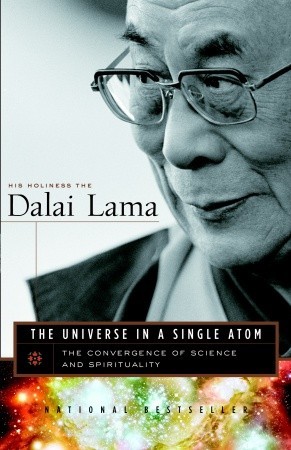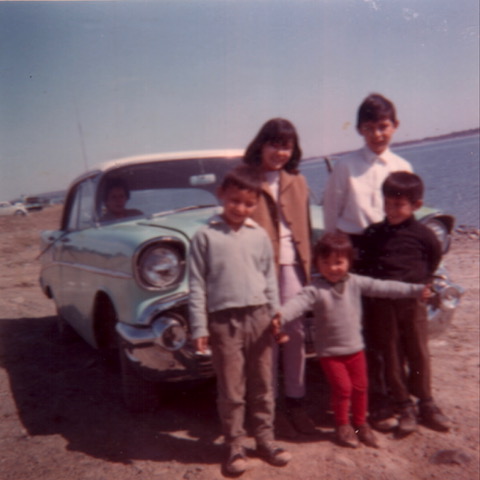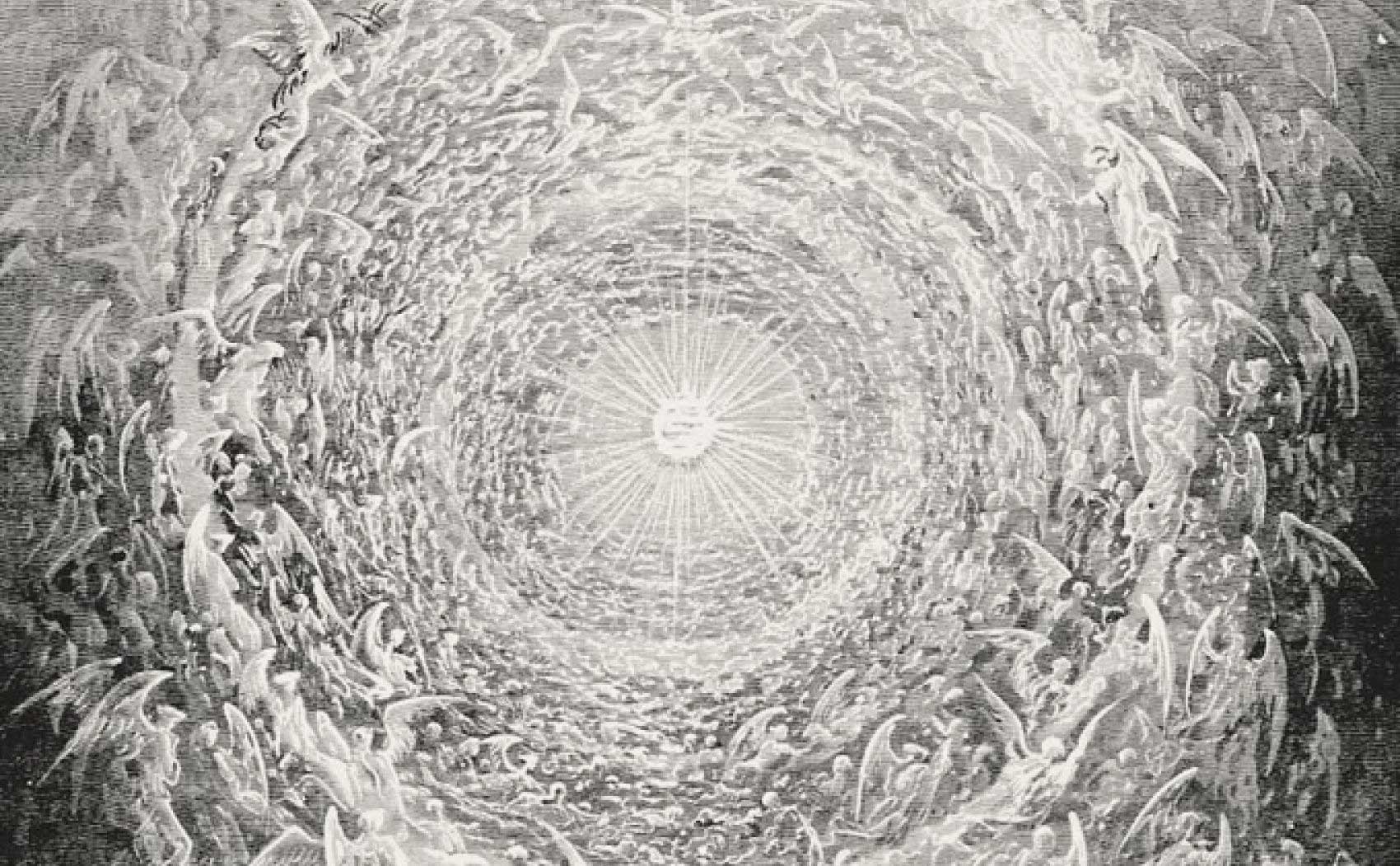
The Universe in a Single Atom. The Convergence of Science and Spirituality
By
His Holiness the Dalai Lama
(Morgan Road Books, New York)
Review by Maya Khankhoje.
Reviewing a book with such a momentous title is no small task. Can a single atom contain the universe? Can science and spirituality ever converge? Or will they keep on running their separate merry ways all the way to an ever receding horizon?
I wanted to make sure Montreal Serai got it right, so I challenged our scientifically minded editors to review this book. Nobody took the bait. Which is just as well, because a scientific mind might squarely reject the Dalai Lama’s position just as a spiritual heart might embrace his postulates uncritically.
So here I am, without a background in either spirituality or science but a deep curiosity about both, attempting a review that makes sense. Since the Dalai Lama explains complex subjects in a deceptively simple manner, any distortions in this review are strictly mine.
Tenzin Gyatso, His Holiness the Fourteenth Dalai Lama, is a Nobel Peace Prize Laureate and until recently was both the temporal as well as spiritual leader of the Tibetan people. He stepped down as head of the Tibetan government-in-exile in 2011 because of his inability to resolve the Chinese-Tibetan conflict and now devotes his time to the international-speaker circuit when not meditating or educating his people in Dharamsala, India.
The book consists of ten chapters which might have been called “jewels” in ancient Buddhist texts. Chapter I is a Reflection on the importance of science in DL’s quest to understand the nature of reality. In the Dalai Lama’s view, spiritual practitioners can fall into fundamentalism if they do not integrate the study of science into their worldview.
Chapter 2 describes the Dalai Lama’s Encounter with Science. Enthroned as the Fourteenth Dalai Lama at the age of 6, he underwent rigorous training in all matters Buddhist . As a break from his studies he would wander over the thousand rooms of the Potala Palace exploring their contents. A collapsible brass telescope and a hand-wound mechanical timepiece belonging to a previous Dalai Lama captivated his imagination. His encounter with two escaped Austrian prisoners of war around 1945 and their knowledge of car mechanics sealed his curiosity about science and the world beyond the confines of his feudal mountain-top home. Later in life his privileged position provided him with personal meetings with scientists like the German physicist and philosopher Carl Von Weizsacker. Informal discussions with him and many more well-known scientists throughout the world helped him deepen his understanding of the scientific world. DL is very clear on the following: “If scientific analysis were to conclusively demonstrate certain claims in Buddhism to be false, then we must accept the findings of science and abandon those claims.” But he also cautions that science must be guided by a consciously ethical motivation, especially compassion.
Chapter 3 is titled Emptiness, Relativity, and Quantum Physics. This is a crucial chapter. Emptiness is a very Buddhist concept, relativity is both a metaphysical as well as a scientific concept and quantum physics is, well, the death knell of Newtonian certainty. DL sees a clear convergence between science and Buddhist thought. Thought experiments like those of Einstein share the same goals as the meditational practices of Buddhists. That God created the universe cannot be a scientific statement in DL’s understanding because it does not contain the tools to be proven false. “Reality”, says DL, is so much more complex than objective scientific materialism allows. And this is where DL sees an unmistakable resonance between the Buddhist notion of emptiness and the new physics. Discoveries in physics show that reality is not what it appears to be, something cogently argued by the 2nd Century Indian sage Nagarjuna.
Chapter 4, The Big Bang and the Buddhist Beginningless Universe, discusses the modern-day assumption that the expansion of the universe emerged from a great cosmic explosion. DL refers back to several Buddhist and Hindu traditions, not all of which he accepts. Tibetan Buddhism originated in the Mahayana School of Buddhism school. An abbreviated version recognizes that ours is but one among countless world systems so that in principle although there is no “beginning” or “end” to the universe as a whole, there is a definite temporal process of a beginning, middle and end in relation to any individual world system. The Dalai Lama sums it up: “And in Buddhism the universe is seen as infinite and beginningless, so I am quite happy to venture beyond the Big Bang and speculate about possible states of affairs before it.”
In Chapter 5, DL speculates on the theory of Evolution, Karma and the World of Sentience. The Buddhist tradition classifies animals as sentient beings and places plants closer to animals than modern science does. Karma, explains DL, is intentional causality which is not to be confused with natural causality or the physical law of cause and effect. Since Buddhism, unlike science, is mainly interested in the alleviation of suffering and the quest for happiness, it divides life into sentience and non-sentience, as opposed to the scientific classification of organic and inorganic matter.
The Question of Consciousness is dealt with in Chapter 6. The development of consciousness is one of the most important tasks of Buddhist practice. In the Dalai Lama’s belief system, the mind can be trained in the right direction, to eliminate weaknesses and develop strengths. And since two opposites cannot occupy the same space simultaneously, one of them will ultimately turf-out (my expression!) the other one creating a critical mass that will ultimately make for a better world. DL is particularly fascinated with the latest developments in neuroscience, facilitated by such technology as fMRI, capable of providing empirical proof of how the brain can heal itself and change … for the better. This is what the scientists call neuroplasticity.
Chapter 7, Towards a Science of Consciousness, is a logical continuation of Chapter 6. Whereas science can see the workings of a brain from an outside perspective, Buddhist mindfulness can help us observe our own consciousness from within.
Chapter 8, The Spectrum of Consciousness, delves into the different approaches taken by Buddhism and cognitive science. “According to Buddhist epistemology, there is a built-in limitation in the human mind’s capacity for ascertaining its objects.” The Dalai Lama explains that these limitations can be vastly reduced with meditation.
Chapter 9 deals with Ethics and the New Genetics. The Dalai Lama has much to say about “the deep public disquiet that is gathering around the topic.” He sympathizes when such technologies are used for medical reasons but is worried about “the manipulation of genes for the creation of children with enhanced characteristics, whether cognitive or physical”.
The concluding chapter is an overview of Science, Spirituality and Humanity. One of the Dalai Lama’s main points is “the case that one can take science seriously and accept the validity of its empirical findings without subscribing to scientific materialism”.
He concludes with a plea for collaboration between science and spirituality, because “we are all in this together”.










